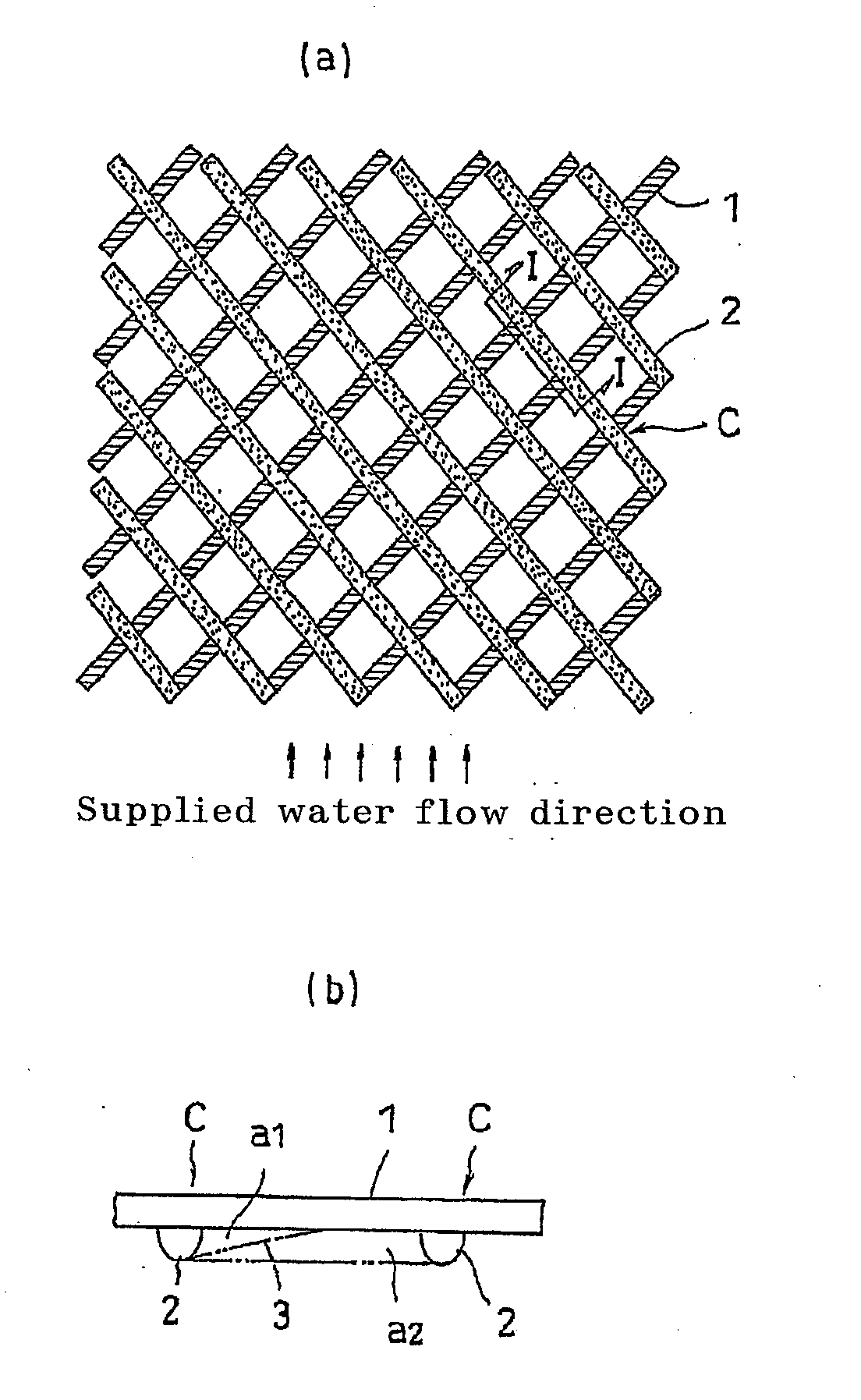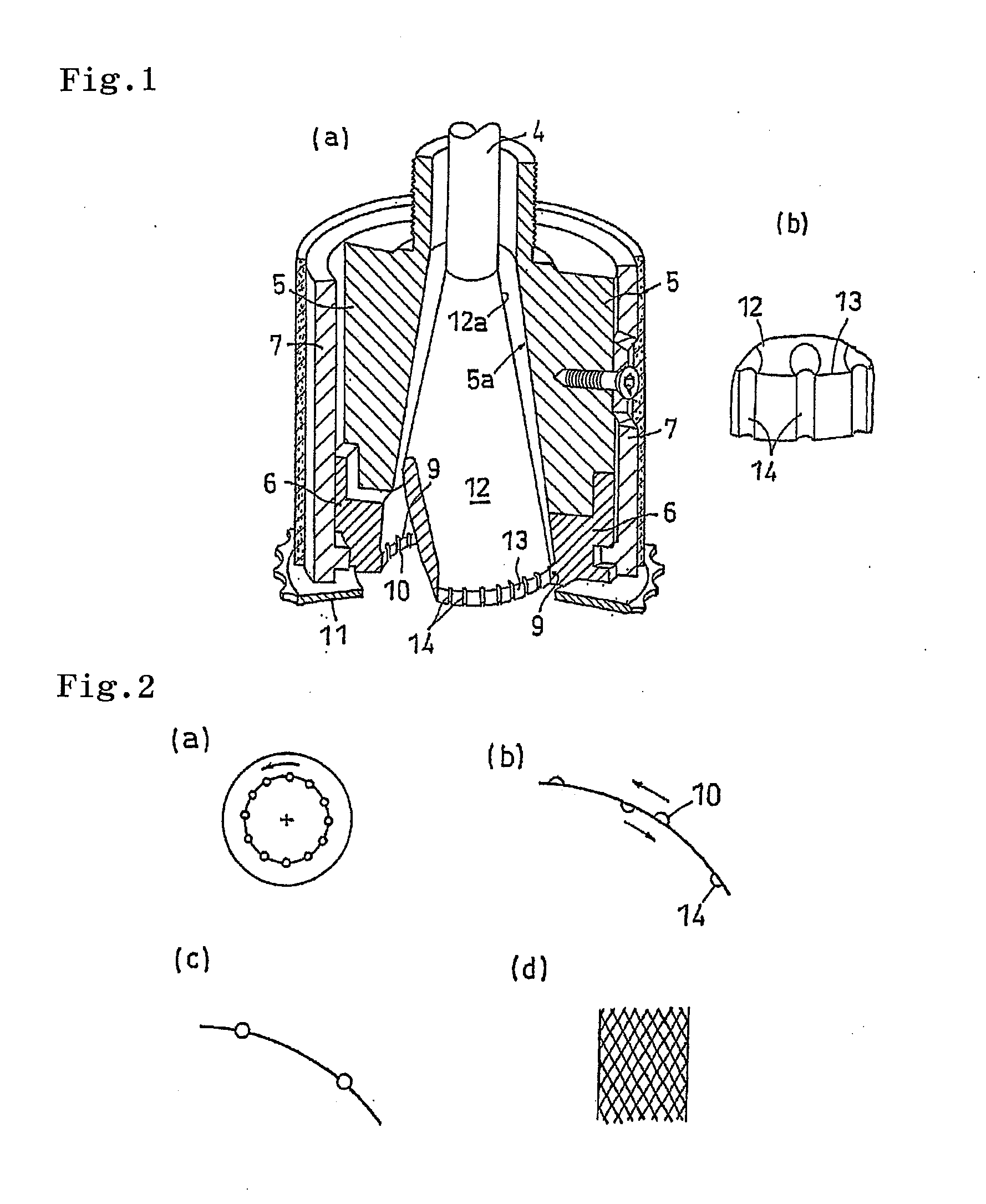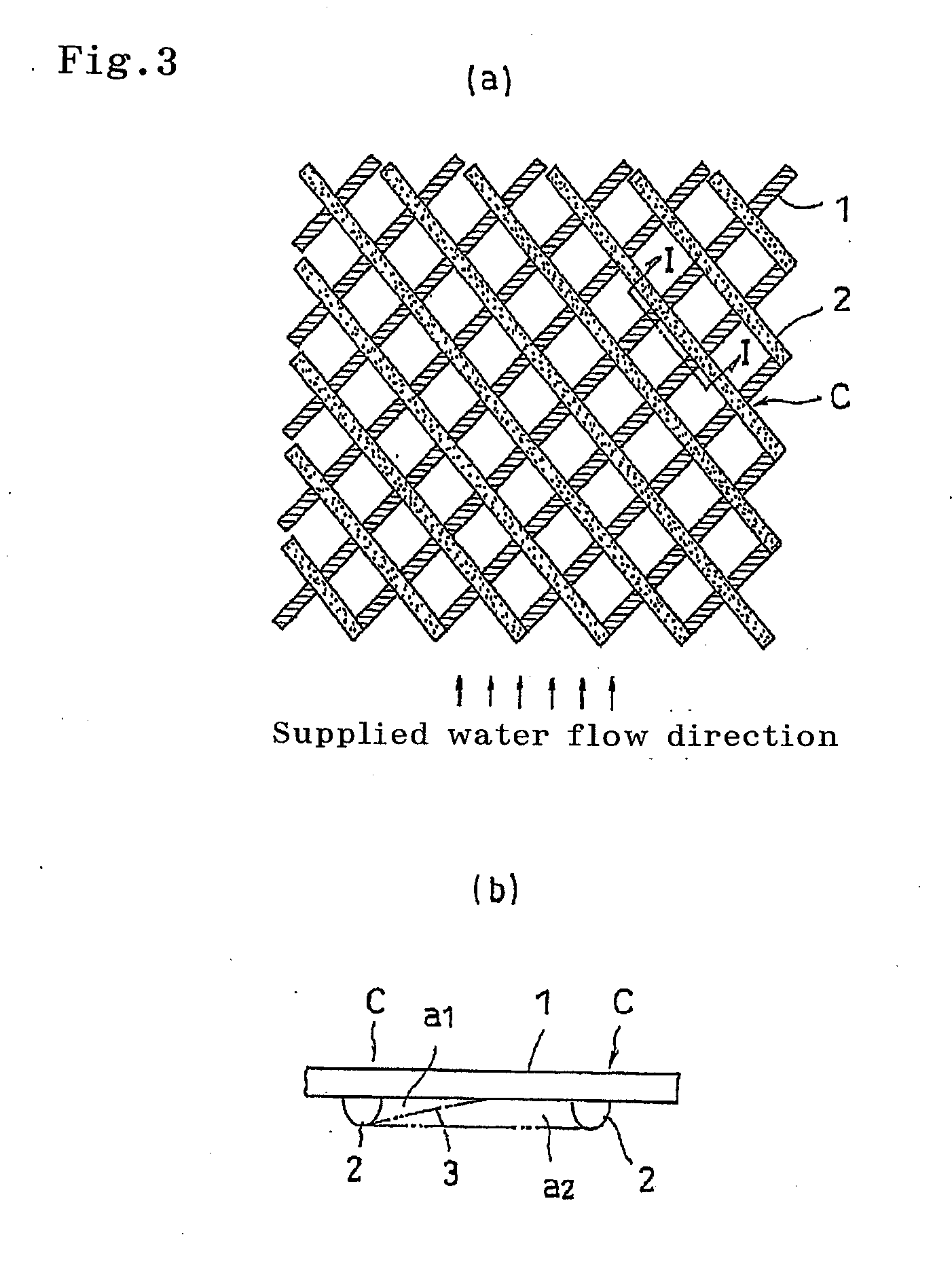Feed side passage material and spiral separation membrane element
- Summary
- Abstract
- Description
- Claims
- Application Information
AI Technical Summary
Benefits of technology
Problems solved by technology
Method used
Image
Examples
example 1
With use of an extruder equipped with a nozzle shown in FIG. 1, a pellet obtained by allowing 0.025 wt % of triclosan as an antibacterial agent in a polypropylene resin (F122G manufactured by Mitsui Chemical Co., Ltd.) is introduced, and is subjected to melt-extrusion at 260° C., whereby a feed side passage material having a net shape was formed by shear molding. During this time, the nozzle shape and the extrusion condition were adjusted so that the obtained net would have a total thickness of 0.79 mm, a constituent yarn diameter (width) of 0.3 mm, a yarn interval of 5 mm, and an intersection angle of 90°.
example 2
An aqueous solution containing 1.0 wt % of a silver antibacterial agent having an average particle size of 0.9 μm (Novalon AG1100 manufactured by Toa Synthesis Co., Ltd.) and 0.5 wt % of polyvinyl alcohol (saponification degree: 99%) was applied onto a skin layer of an ultra-low-pressure reverse osmosis composite membrane (type: ES20 manufactured by Nitto Denko Co., Ltd., skin layer: polyamide resin, performance: permeation flux 1.2 (m3 / m2·d) by the aforesaid measurement method, salt inhibition ratio of 99.6 (%)). Thereafter, the resultant was dried at 130° C. for 3 minutes in an oven to form an antibacterial layer, so as to fabricate a composite semipermeable membrane. A spiral separation membrane element shown in FIG. 7 was fabricated by using this composite semipermeable membrane, a feed side passage material obtained in Example 1, and a permeate side passage material (made of PET resin, thickness of 0.3 mm).
Before and after the water (having an SDI value of 3 to 6) obtained by a...
example 3
On a non-woven cloth base material, a solution obtained by dissolving 18 wt % of polysulfone (P-3500 manufactured by Solvay Co., Ltd.) into N,N-dimethylformamide (DMF) was uniformly applied to a Wet thickness of 200 μm, followed by immersion into a water bath at 40 to 50° C. for solidification and washing to fabricate a porous support. On this porous support, an aqueous solution of amine containing 3 wt % of m-phenylenediamine, 0.15 wt % of sodium laurylsulfate, 3 wt % of triethylamine, 6 wt % of camphorsulfonic acid, 5 wt % of isopropyl alcohol, and 0.5 wt % of silver nitrate was applied, and thereafter an extraneous aqueous solution of amine was removed to form an aqueous solution covered layer. Subsequently, on the surface of the aforesaid aqueous solution covered layer, an organic solution containing 0.2 wt % of trimesic acid chloride and naphthene hydrocarbon (Naphthesol 160 manufactured by Shin Nippon Petroleum Co., Ltd.) was applied. Thereafter, the resultant was held in a ho...
PUM
| Property | Measurement | Unit |
|---|---|---|
| Length | aaaaa | aaaaa |
| Weight ratio | aaaaa | aaaaa |
| Content | aaaaa | aaaaa |
Abstract
Description
Claims
Application Information
 Login to View More
Login to View More - R&D
- Intellectual Property
- Life Sciences
- Materials
- Tech Scout
- Unparalleled Data Quality
- Higher Quality Content
- 60% Fewer Hallucinations
Browse by: Latest US Patents, China's latest patents, Technical Efficacy Thesaurus, Application Domain, Technology Topic, Popular Technical Reports.
© 2025 PatSnap. All rights reserved.Legal|Privacy policy|Modern Slavery Act Transparency Statement|Sitemap|About US| Contact US: help@patsnap.com



